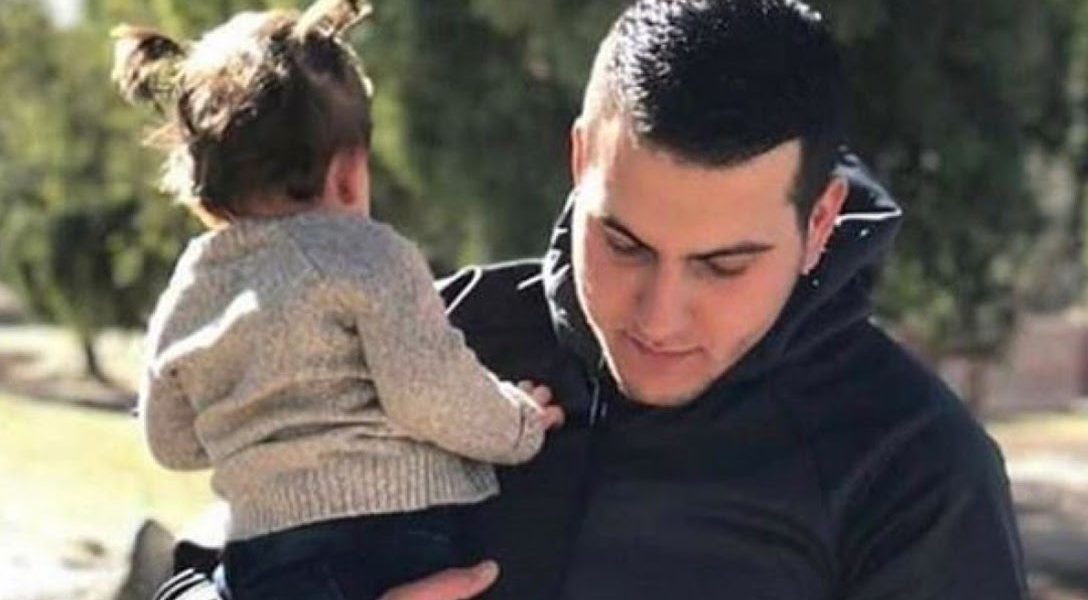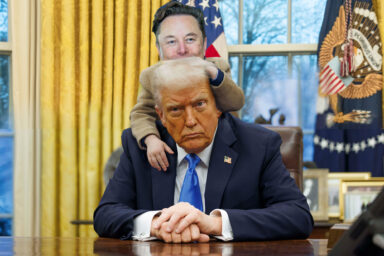First of a three-part series about deaths at the hands of police in Tucson, AZ, and Richmond, CA.
“Get on the f—ing ground!” cops yell.
“OK, OK, please,” Carlos Adrian Ingram-Lopez desperately pleads as he drops to all fours, naked, disoriented, and terrified in a darkened corner of his grandmother’s Tucson garage.
He wails and screams as three officers swoop down on him, forcing his face into the floor as they double handcuff his arms behind his back. He offers no resistance, apologizing, “I’m sorry, I’m sorry, I’m so sorry. I love everybody.” He cries out for his grandmother to help, “Nana, ayúdame! … Please give me some water. … I can’t breathe!”
“Tranquilo! Chill the f— out, man,” shouts Officer Ryan Starbuck, bearing down on the man’s back. Starbuck, with 12 years of experience as an emergency medical technician, should have known better.
“Why are you doing this to me?” Ingram-Lopez asks in bewilderment as his increasingly desperate pleas for water are continuously ignored.
“You’re going to get shocked, dude,” threatens Officer Samuel Routledge. “You’re gonna get zapped.”
The hyped-up police officers jam a spit sock over the head of a man who is crying that he can’t breathe. His grandmother hands one of them a bottle of water for Carlos, but it’s not passed on. They cover his overheated head and body with yellow blankets while he struggles.
He is choking now, desperately trying to clear his throat, shouting out helplessly for the water he never receives. “Oh my God, no, no, no!” he cries out.
The last few minutes of his life are captured on video recorded by police body cameras. They show him struggling, pleading, covered with a blanket, and finally unresponsive as one officer taps him and asks, “Are you alive?”
Attorney Greg Kuykendall, who represents the 2-year-old daughter of Ingram-Lopez, has viewed footage of the April 21 incident from several of the police body cams.
“So the police arrived, guns drawn,” said Kuykendall. “They taze the dog, they start shouting, they order Adrian to the ground. And Adrian at this point is naked; it’s cold outside but he’s naked and sweating and he’s screaming. And the reason we know this is we’ve got body cam evidence from the various officers, and it shows that what they did is they immediately ordered him to the ground. He complied and they put handcuffs on him and then they jumped on him.
“So he’s face down on the pavement in his grandmother’s garage, sweating profusely, screaming, crying,” Kuykendall continued. “He’s clearly in a state of high distress. And he’s very, very hot and dehydrated, he’s begging for water.
“This goes on for 12 full minutes. And during this time he’s not only handcuffed but these three large officers are on him; literally kneeling on his back between his shoulders. And then after about nine minutes of kneeling on him … they put a spit mask on him. And he’s not spitting at them or anything else; he’s face down on the pavement. But they put a spit mask on him and ultimately they suffocate him.
“And after about 12 minutes some other officers noticed that this is completely against regulation, that he’s down, face down, and that he’s got this spit mask on and that he’s not moving. So they say ‘What’s going on? Shouldn’t he be in the recovery position?’ So they uncover him at that point — they had covered him previously with plastic blankets which just made him that much hotter.
“They step off of him and they turn him over, and he’s dead.
“So they begin to perform CPR on him but he’s dead. And not only have they now killed this guy, but then they don’t tell the mayor or the City Council about it for not just a month but for two months. And after one month — one month after they’ve killed him, George Floyd is murdered and the nation erupts about that.”
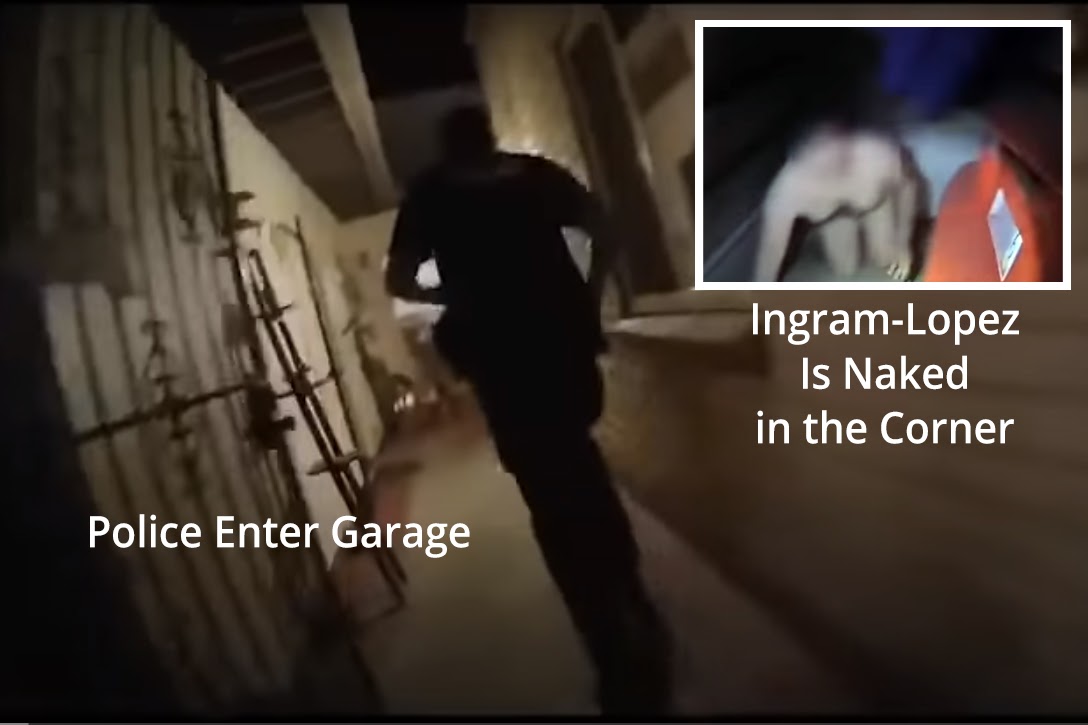
This is a too-familiar story, says Kuykendal: A family member is having a breakdown (Ingram-Lopez was under the influence of cocaine), they call 911 for help, and that “help” turns deadly when the police responders turn a psychological breakdown into a family’s worst nightmare.
“It’s a series of events that routinely and repeatedly happens to people of color. It’s shocking to me, and I am old enough and have been doing this for long enough that I shouldn’t be shocked anymore,” said Kuykendal.
“But this one absolutely shocks me; the level of violence that they did and for the length of time that they did this to Adrian while he lay screaming, and then finally he died and they still stayed on top of him. And at one point in the body cam footage you can see one of the officers slap him on the back and say ‘You finally calmed down did you?’ or something of that nature.”
Magdalena Ingram, the grandmother, had called 911 for help because Carlos was under the influence and behaving erratically, not because he was a threat to anyone. Among the officers restraining Carlos was Starbuck, who was a certified EMT before joining the Tucson police. Yet somehow neither he nor the other officers recognized this situation as an extreme medical crisis until it was too late to matter. Twelve minutes and 14 seconds after being cuffed with his face pressed against the floor, 27-year-old Carlos Adrian Ingram-Lopez lay still. He will never again be greeted by his family, or hold his little girl.
It is obvious why police would be in no rush to release the body camera footage. But it’s even more troubling that Tucson Police Chief Chris Magnus — known as a reformer in the field of policing — was the one sitting on the Tucson footage, even while saying he would never support the kind of deadly police force applied to George Floyd in Minneapolis.
On September 2, Kuykendall filed a notice of claim under the Arizona Wrongful Death Act, giving the city of Tucson 60 days to settle or to be prepared to be sued for Ingram-Lopez’s death. The family is seeking $16 million from city taxpayers and an additional $3 million from three of the police officers at the scene.
“One of the police officers had been an emergency medical technician, and for 12 years prior to joining the Tucson Police Department,” said Kuykendall. “That’s the officer that put the spit mask on him in complete violation of all the protocols and procedures and the training that he’d received. That officer … personally was aware of the medical risks that are inherent in putting a mask of this sort on top of a person that’s experiencing this kind of state of excited delirium … they recognized that he was in a very unlucid state of psychological condition.”
Somebody picked up the spit mask and threw it away.
Kuykendall also said the officers ignored the grandmother’s attempt to help. “At one point — and mind you this is a Hispanic grandmother that barely speaks English — at one point she came out in the garage against police orders and brought him a bottle of water. The police — these police officers initially claimed that he had never even asked for water. But he was shouting: ‘Nana, ayúdame; Nana, agua,’ and saying it in English as well.
“The former EMT took it from her and he said ‘We’ll give him water when he begins to calm down; when he complies with our request.’ Now [Ingram-Lopez] was totally compliant in terms of not being able to move or anything, but he was continuing to shout and scream because he was in such a terrible psychological state.
“But that’s the mindset that you’ve got is a guy with medical training who refuses to give water to a man who’s begging for water and who desperately needs water, and instead puts a spit mask on him and then allows him to be suffocated. I mean he chokes and suffocates on his own vomit inside the spit mask.”
Then the spit mask disappeared. “So it’s not even a piece of evidence and we’re unable to find out precisely what was in the spit mask and whether Adrian choked on his own vomit or sputum or whatever it was,” Kuykendall said.
“It is destruction of evidence. I don’t know who destroyed it. … And there was a whole task force of police officers out there collecting evidence and doing it just like you see on TV; putting down the little numbers and taking a million pictures. But somebody picked up the spit mask and threw it away.”
The mask “never should have been placed on his head in the first place, [it] violated all of the protocols and training that these officers had repeatedly received,” Kuykendall said. “Even by the police officers’ own reports they acknowledged that they’d received spit mask training over and over again.”
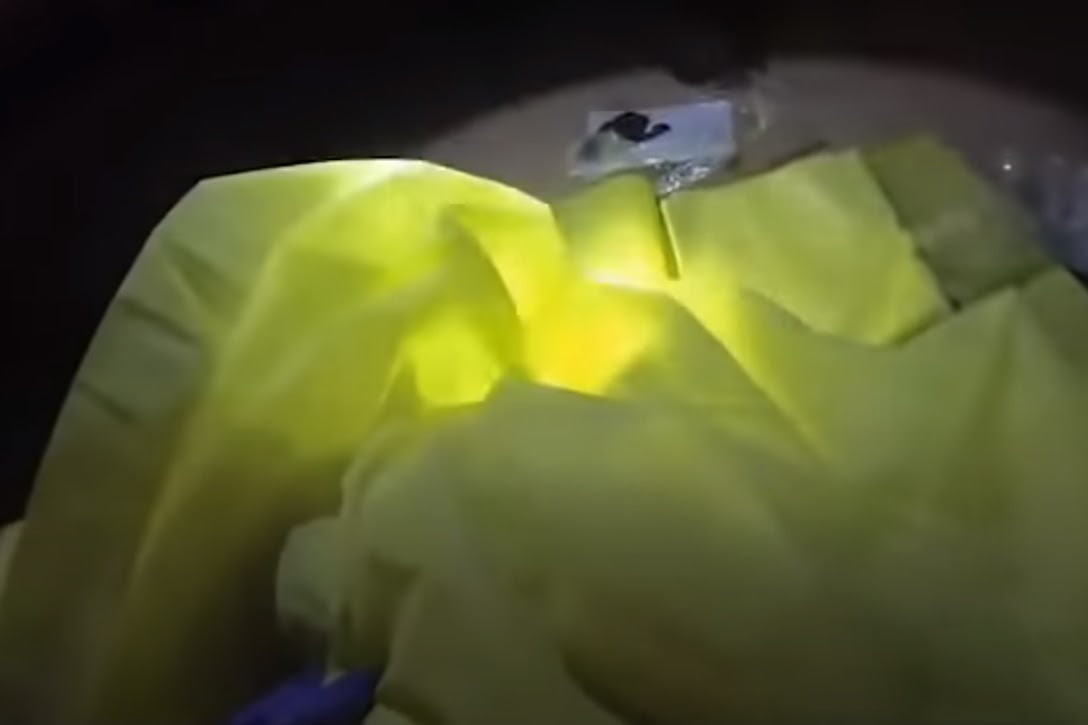
According to a subsequent internal investigation completed in June, three of the five officers committed major violations: “Multiple allegations of misconduct were sustained against three of the officers, all of which resulted in the finding of Severe Misconduct … The investigation revealed a series of actions by each of the three focus officers which showed complete disregard for the training provided to each, disregard for established policy, but most importantly an apparent indifference or inability to recognize an individual in medical distress and take the appropriate action to mitigate the distress.”
The three officers who interacted directly with Ingram-Lopez — Starbuck, Routledge, and Jonathan Jackson — “were recommended for termination” in the report, completed June 19. But after sitting on the videotape for two months, Chief Magnus allowed the officers to resign the previous day, instead of being fired.
Magnus also apparently ignored a second independent autopsy, commissioned by the family, that pointed the finger at police. “His death is most consistent with asphyxia due to a compromised airway, which is best explained by the face-down position restricting his breathing,” the autopsy report said.
Tucson Mayor Regina Romero and members of the City Council first saw body camera footage of the incident on June 22. In a Facebook post on June 23, City Council member Lane Santa Cruz revealed to the public for the first time the details of Ingram-Lopez’s brutal death. She has been under extreme pressure ever since, including demands from the police union to resign or be fired.
“I already had a sense of the framing that they were going to try to put around his death,” Santa Cruz told WhoWhatWhy. “Basically, they were going to do character assassination and talk about like, ‘This was a choice he made doing coke.’
“I felt like that was very unfair,” she said. “I myself lost my brother four years ago to an accidental fentanyl overdose. And to dehumanize somebody like that, for mental health and drug addiction, is very wrong.” Santa Cruz said the family of Ingram-Lopez called police to get help for Carlos, “not for him to die.”
The Cover-Up
After the April 21 death of Ingram-Lopez, but before it was disclosed to Tucson officials or the public, George Floyd died at the hands of Minneapolis police on May 25, igniting worldwide protests against police brutality.
Magnus and the police union also went to great lengths to distance themselves from events in Minneapolis. The chief proudly declared there had been only 12 deaths in Tucson police custody over the past decade, of which seven were determined to be suicides, while five died being restrained by police.
Tucson police released a public statement on June 23 that stated “death as documented in the Pima County Medical Examiner’s report was ascribed to sudden cardiac arrest, with acute cocaine intoxication and an enlarged heart.” However, the actual report, released in full the next day by the county medical examiner, stated — twice — that the cause of Ingram-Lopez’s death was “sudden cardiac arrest in the setting of acute cocaine intoxication and physical restraint [emphasis added].”
Roberto Villaseñor, who was Tucson’s police chief until he retired in 2015, told the New York Times that officers had been trained not to leave people in a face-down position. “You never try and leave someone on their stomach,” he said. “You turn them to the side and help them sit up so they can breathe. Why they didn’t do that here is going to be one of the major questions.”
Santa Cruz said it was a “glaring omission” to omit physical restraint in the police department’s summary. “This is reckless and points toward an attempt to hide/obscure information that the family and public would need,” she told TucsonSentinel.com. “The overemphasis by TPD pointing to cocaine in Adrian’s autopsy report is nothing but victim-blaming. It is 2020 and it is well documented that drug addiction is an illness. No life is disposable.”
In response, the Tucson Police Officers Association (TPOA), called for Santa Cruz to resign, and even conjured up phony allegations that she assaulted an officer at a vigil for Ingram-Lopez.
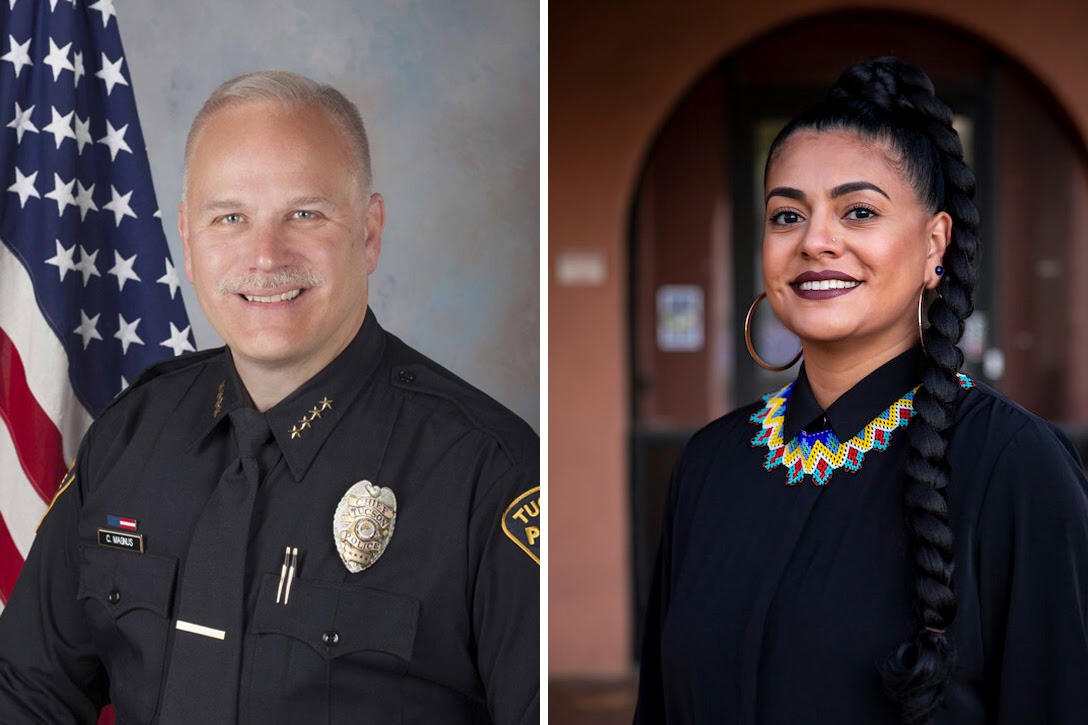
Las Adelitas Arizona, a community activist group, issued a letter of support praising Santa Cruz for “her willingness to ask questions, demand accountability and engage in our community.” It said the police union criticism was “an attempt to intimidate, misrepresent and deflect attention away from Council Member Santa Cruz’s legitimate concerns and actions. These attacks are also politically motivated, stemming from their support of [President Trump’s] agenda and employing the same bullying tactics he has popularized at the national level.”
Magnus had another media trick up his sleeve. At a high-profile press conference, after viewing the death tape, and in a move that surprised the mayor and the city council, Magnus offered his resignation, which diverted the focus of the press conference from the killing of Ingram-Lopez. Neither the mayor nor the city manager accepted the resignation.
“It was a distraction,” said Santa Cruz, “and it was followed by an attack on the victim for being a druggy or whatever they were saying. It was meant to degrade the victim.”
“And it was successful,” added Kuykendall. “It was a two-part strategy and he was successful on both parts. One was to change the focus of the national media’s attention. So what you saw reported the next day in the New York Times and the other big media outlets was that the chief of police had offered to resign, which is beside the point.
“I mean the point is the Tucson Police Department killed a man, and in an extraordinarily horrendous, egregious way. So he successfully changed the topic of conversation because now it becomes all about him.”
This isn’t the first time that an officer under Magnus has been blamed for the death of an unarmed man who had committed no crime. Years earlier, Magnus left the same position in Richmond, CA, under a cloud after grossly mishandling the death in police custody of a young man who was shot multiple times at close range.
—
Read “Fatal Errors, Part 2: Shot by Police in Richmond, CA” – an earlier death in police custody on Magnus’s watch, finally ruled unwarranted after years of community pressure for an independent investigation.
The author of this series, Dennis J. Bernstein, is an experienced investigative journalist and host/producer of Flashpoints, syndicated on public and community radio stations across the US and Canada. Bernstein is the recipient of many awards for his work, including the 2015 Pillar Award in Broadcast Journalism, and his articles have appeared in numerous newspapers and magazines.
Related front page panorama photo credit: Adapted by WhoWhatWhy from James Freeman / YouTube.
